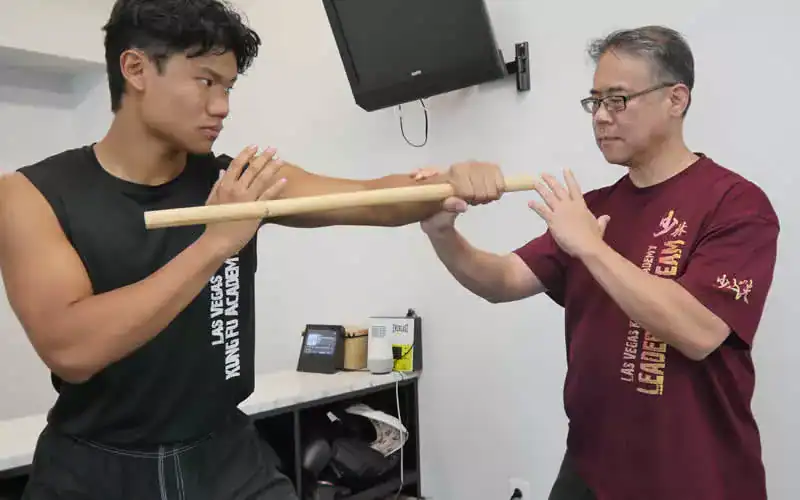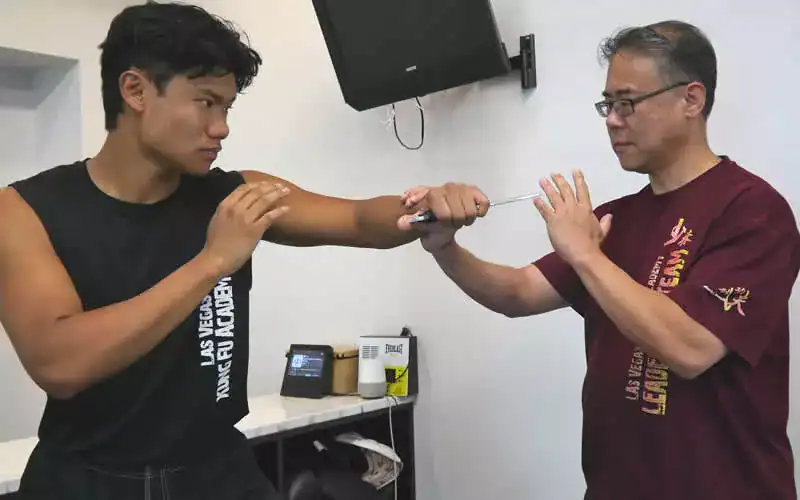Punyo Mano: The FCS Kali Game-Changer with a Knife-Fighting Edge
When I first started training in Kali and Escrima 20 years ago, all I wanted to do was work on Sinawali. Sinawali is double stick patters for those of you who are new to martial arts.
Anyway, I felt like the counters and applications of Kali were somewhat boring to learn and practice. Don't get me wrong, I still worked on them often. Today Serrada Eskrima counters are now one of my favorite ways to practice.
However, 20 years ago, the single stick counters just didn't excite me as much because they didn't have an element of flow to them.
FCS Kali is all about flow.
In FCS, there’s one skill or drill that really expresses this element of flow: Punyo Mano. It’s a slick set of techniques that’s are versatile as it is powerful.
So, what exactly is the FCS Punyo Mano transition drill?
In Tagalog, punyo means the butt or base of something. The word "mano" means hand.
In FCS Kali (Filipino Combat Systems Kali), Punyo Mano are drills using butt end of your stick as a weapon.
Most stick-fighting systems don't emphsize the use of the punyo as much as FCS does. Instead they focus on swinging the stick and using the tip to cause damage to your opponent. FCS Kali zooms in on that often-overlooked pommel for close-range destruction.
In real combat there are going to be time when you’re too close to your opponent to swing your stick freely. It is in these instances where, striking with the punyo becomes instantly effective and practical.
A quick jab to the face, ribs, or hands using the butt end of your stick can mess up your opponent’s day. It’s also gives you a perfect setup for follow-up strikes, disarms, or even takedowns and throws
The connection to knife work
Here’s where Punyo Mano drills gets really interesting: it’s like a cheat code for knife fighting.
Specifically, punyo mano techniques do not change when you shorten the weapon to the length of a kitchen knife. The way you strike with the punyo of your stick is exactly how you’d stab or slash with a knife in a reverse grip.
The reverse grip is called "Pakal" in Tagalog. You hold the knife like an ice pick, blade pointing down. This grip is a favorite in Filipino martial arts because of the raw power and precision in tight spaces that this grip give you.
The techniques have the same motion, and the same targets. So, when you’re drilling Punyo Mano, you’re not just getting better with a stick—you’re wiring your brain for knife combat, too. It’s like training two skills for the price of one.


Why FCS Kali Loves This Drill
FCS Kali, created by Tuhon Ray Dionaldo, pulls together the best of Filipino martial arts into something that’s ready for the real world. Punyo Mano fits perfectly into that mindset.
Punyo Mano Drills are exceptional good because:
- It teaches you to dominate in close-quarters chaos.
- It forces you to think about your weapon as a whole, not just the “business end.”
- It builds the coordination you need for reverse-grip knife work.
- It makes you adaptable, whether you’ve got a stick, a blade, or just your fists.
This kind of crossover—stick to knife to empty hand—is what makes Filipino martial arts so damn effective. One movement, endless possibilities.
FCS Kali punyo mano drills prepares you you for all kinds of combat, especially if a knife’s involved.
Understanding the Foundations
- Use an overlapping thumb grip, butt end flush in your fist.
- Adopt FCS Kali’s ready stance: weapon-hand forward, knees bent, shoulders square.
- Hips and foot placement power every punyo strike.
- Train the snap motion from shoulder to wrist—efficient and explosive.
Level 1: Entry Drill (shown by Cody Chilson)
Level 2: Transitional Flow Drills
Level 3: Embedding Knife Concepts (Pakal/Ice‑Pick Grip)
- Reverse “ice-pick” grip: hold the knife with blade tip down, like punyo mano
- Practice drills:
- Perform punyo jab → switch to ice-pick knife jab at same height.
- Slowly exaggerate motion, preserving shoulder-wrist snap and centerline alignment.
- Visualization: each punyo strike mimics the downward jab of the pakal grip.
Level 4: Progressive Resistance & Applications
- Soft target strikes: ribs, forearms.
- Drill counter-flow: punyo strike → partner parries → you flow into punyo hook.
- Use rubber training knife: simulate same entry and jab timing.
- Emphasize 1–2 punyo combinations and countering partner’s random jabs.
- Gradually increase resistance.
- Focus on mechanics, not power—speed and control first.
Punyo Mano
Don't be like me. 20 years ago I did not open my mind up to the possibilites of different kinds of Filipino martial arts drills. now that I have matured I can definately see the effectiveness and practicality of punyo mano drills.
Punyo Mano is much more than a simple stick drill—it’s the gateway to reverse-grip knife work (Pakal/Ice-pick). By training through these progressive levels—from solo drill to pressured sparring—you’ll internalize a motion that transitions smoothly into close-quarters combat.
